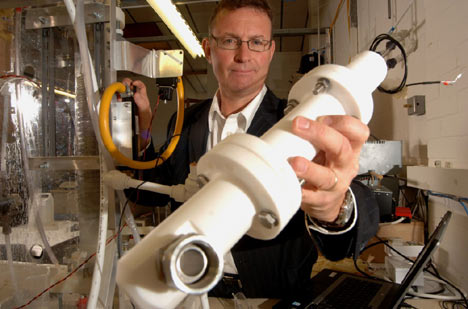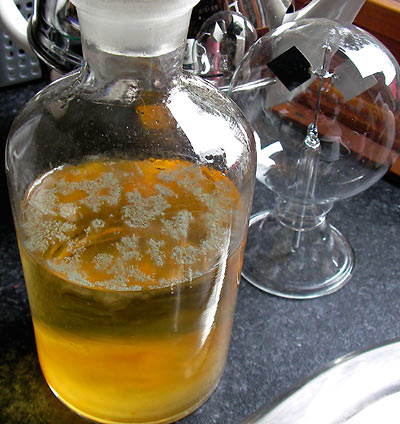The Oak Ridge Associated Universities' Health Physics Historical Instrumentation Museum has a marvellous online collection of Radioactive Quack Cures.
I was already familiar with radioactive water jugs, the most famous line of which was the "Revigator", from Theodore Gray's Periodic Table Table site. He's got a Revigator, which he was alarmed to note is still quite hot even now, about eighty years after it was made and lined with the uranium ore whose decay contributed "healthful" radon to the water inside.
There were plenty of other allegedly radioactive medicines and devices on the market not long after the discovery of radium. "Radium" was used as a pretty generic term for anything radioactive in the quack market, and it took over the "science magic" medical role previously occupied by electricity. But this definitely wasn't a change for the better. Most of the electrical quack devices, then and now, were at least harmless. The radioactive ones often very definitely weren't.
If you were lucky, there was no real "radium" in the tablets, water jug or pillow you bought. If you weren't, there was.
The thing that blew my mind about the Oak Ridge Universities site, though, is the revelation that radioactive quack devices are still being made!
We're not talking about brachytherapy devices here. Those are genuine and useful, though hardly a mass market product.
No, these are good old fashioned allegedly-radioactive things that you're meant to affix to your person, or apply to food or drink (or cigarettes!), to charge yourself up with those friendly little cartoon atoms from the '50s educational films.
It boggles my mind that anybody today would think that exposing yourself to significant ionising radiation could possibly be the sort of "general tonic" that's the hallmark of so much quackery ("general tonic" has been replaced by "strengthens the immune system", but the principle remains the same).
But here the darn things are.
Hot pottery, limb-soothing fabric, water treatment doodads... oh, and naturally a thing to make your car run better.
Almost all of the modern quack products, even more bizarrely, come from Japan. If you asked me to name the one place in the world where radiation wouldn't be believed to be healthful, I think I'd probably go for the Ukraine before Japan, but it's a close-run bloody thing.
I mean... what?
The other distinguishing feature of modern ionising radiation quackery, fortunately, is that these devices are definitely much less harmful than the worst of the old ones, and probably barely radioactive at all. The days of radon bulbs for your soda syphon are well past.
The modern products all just seem to be allegedly doped with a bit of thorium, a weak alpha-emitter that does indeed have radium and radon as decay products, but is really only worth worrying about if you're eating or breathing it.
Thorium-doped gas mantles for camping lanterns are still on sale in most countries, and they're about a zillion times less dangerous than whatever mode of transport you use to get to your camp site.
Still and all, though, the very existence of these products depresses me. Yes, I know about all of those surveys where 80% of respondents think the sun orbits the earth, and the popularity of Creationism, homeopathy and "detoxification" has also not escaped my notice.
I even know that some of the customers of these quacks may have formed a genuine, informed opinion against the linear no-threshold model, and thus believe for at least somewhat rational reasons that a slightly above-background radiation dose may be good for them.
But still.
Ionising radiation?
Seriously?
(See also: Can you make a nuclear explosion with your bare hands?)

